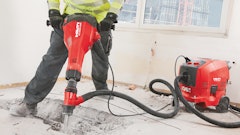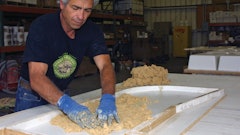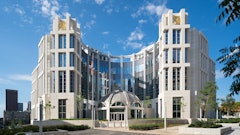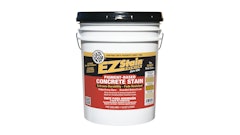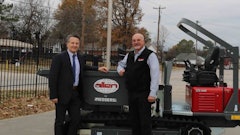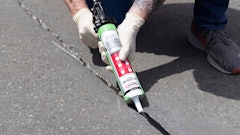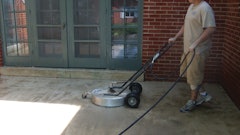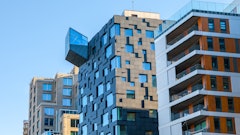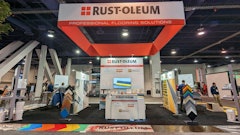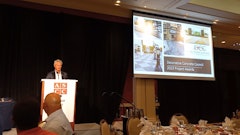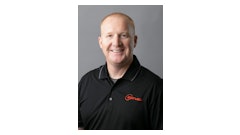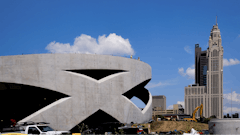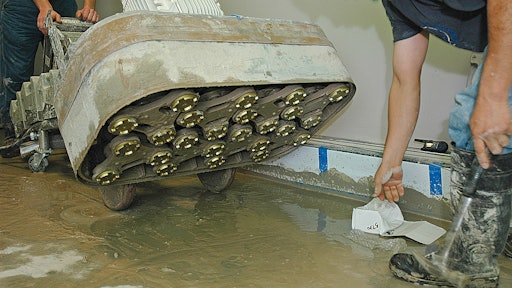
In order for contractors to be efficient and profitable in the concrete grinding and polishing industry, they need to understand that the end use cost of an abrasive is different from the purchase cost of the abrasive. End use cost is the cost of the abrasive set divided by the square feet the abrasive produces before it is no longer useable and the cost of labor required to effectively use that abrasive.
If an abrasive cost seems too good to be true, it probably is. Don’t base your purchasing decision on price. For an abrasive to be effective it has to fully refine the concrete from one grit to the next. Let’s take a look at the basics of bonded abrasives and the factors that affect abrasive cost and labor cost.
Grit
Grit is measured in micrometers (also called microns) and assigned a numeric value based on its size. The smaller the grit designation, the larger the grit particle is. Exact sizing of particulate is expensive so an abrasive will have a range of particulate with overlapping sizes. For example, an abrasive classified as 120-grit will not only contain 120-grit but also have a percentage of 100-grit and 150-grit. A typical grit sequence for polishing concrete does not contain all of the grit sizes available to an abrasive manufacturer. Instead, beginning with the starting grit, each consecutive grit approximately doubles in size.
Man-made material is most often used due to expense and the ability to create consistency. Man-made particulate comes in various forms of alumina, silicon carbide and most widely used are superabrasives made from cubic boron nitride and synthetic diamond. The individual grains of grit come in different shapes and strengths. Quality manufacturers will have products with properly dispersed grit in the abrasive bond, proper grading of the grit particulate and quality particulate that won’t easily fracture or crush.
Bonding
Grit particulate is bonded together by various bonding material to form an abrasive. Abrasives may be made through an injection process, hot and cold pressing, electroplated, or vacuum brazed. The two primary bonding materials used are metal and resin. Metal abrasives are made from a blend of micro-graded, granulated metal oxides and/or powders. Harder metal-bond abrasives are made from cobalt, brass and titanium. Softer bonded metal abrasives may be made from copper. Resin abrasives are made from poly-phenolic and esterphenolic for wet and dry use and thermoplastic-phenolic resins for dry use only. Also on the market are hybrids that are made from a combination of bonding materials and ceramics.
Shapes and sizes
Bonded abrasives have contact area and non-contact area. The area that is in contact with the concrete surface is an additional factor that determines how much abrading the abrasive is capable of producing.
End use cost variables
The quicker an abrasive can produce a fully refined surface throughout a determined sequence, the quicker a crew can get on and off the job. An abrasive’s bonding is the most important consideration that affects the actual end use cost.
For an abrasive to most efficiently work, the bonding must wear at the same rate at which the concrete is being abraded. For this to happen the bonding must be matched to the hardness of the concrete and work in conjunction with the weight of the machine, the speed the abrasive is driven, the rotational direction the abrasives are driven, and the rate an operator moves the machine in a liner motion. Most machines allow an operator to add or remove weight and adjust the rotational and liner speed allowing an operator to take maximum advantage of the type and hardness of the bonding.
Abrasives are available with various bonding hardness to ensure diamonds are exposed most efficiently for maximum cutting. The hardness of the concrete and the aggregate in the concrete will help a contractor determine the hardness of the abrasive bonding necessary for the most efficient cutting. Hard concrete will require a softer bonding so new abrasive grit is exposed easily for maximum cutting. Soft concrete will require a harder bonding. Soft concrete produces very abrasive particulate that rapidly wears the bonding. The harder bond slows down the deterioration of the abrasive. To save money on soft concrete, use higher grit metal-bonded tools to eliminate the excessive wear of resin bonds.
The greatest return on an abrasive is when an operator has the knowledge to match an abrasive's bonding to the hardness of the concrete and manipulate equipment weight, the rotational speed and the liner speed of the equipment for the most effective and efficient cutting. This result is less labor and cost effective wear of an abrasive.
Lower grits work best at lower speeds. A lower grit run at higher speeds will not properly bite and abrade the surface but instead glide or skip over the surface. One of the ways to run higher speeds adding to production and lower labor costs is by adding more weight. However, remember that in order to do this you will need an abrasive with a bond designed to run under heavier weight and higher speeds.
Higher grits can be run at higher speeds because they are removing less material from the surface and do not need excessive bite with the surface. If you are running your higher grits at low speeds you can increase production and reduce labor by running a higher RPM.
If using a planetary head machine, the directional rotation of the main head and satellite heads will affect how an abrasive cuts. When using a planetary head machine the satellite head rotates in one direction. The path of least resistance is for the main head to rotate in the opposite direction. If both the main and satellite heads can be set to rotate in the same direction, a more aggressive abrasion will occur resulting in higher production. Again, for this to work the bonding has to be taken into consideration.
The shape and size of an abrasive can also increase production. The higher the abrasion the greater the production and the lower the labor cost associated with that abrasive’s end cost. The more contact area an abrasive has, the more efficient it will work under the right conditions. With increased contact area, an abrasive has more friction that is produced between the abrasive and the concrete surface. As a result this may require machines with larger motors and more weight for the bonding to effectively wear.
A critical factor that many contractors don’t think about is excessive diamond wear when the concrete is not fully refined from one grit to the next. When an operator fails to fully refine the concrete and they move on to the next grit, additional wear occurs because that grit abrasive has to work harder to remove an inconsistent unrefined scratch pattern increasing wear and costsA couple of additional tips to reduce labor associated with abrasives: 1) maintain your equipment so it does not cause uneven wear on the abrasives, and 2) use a quick change system to reduce the time the equipment is sitting idle.
Much of what is talked about in this article is focused around the proper bonding for the type of concrete you are working with. It is not realistic to own multiple sets of abrasives with different bonding unless they are going to be used on a regular basis. Abrasives that sit on the shelf reduce cash flow, and often these sets mysteriously become incomplete or mismatched resulting in wasted money. You will find that based on your geographical location and the equipment there will be a set of abrasives that perform effectively the majority of the time. When you find this set stick with them and learn how to best use them by manipulating the variables described above.






